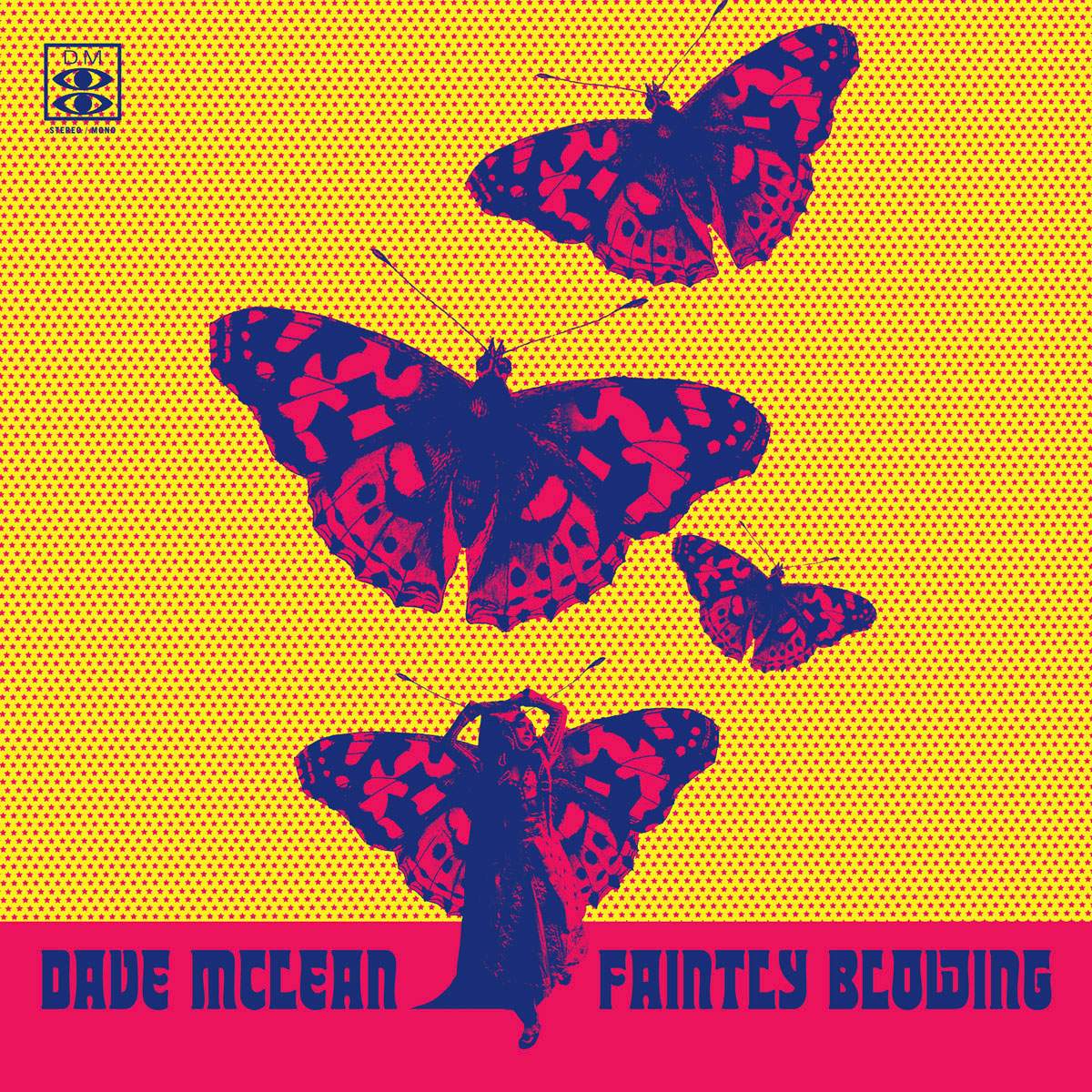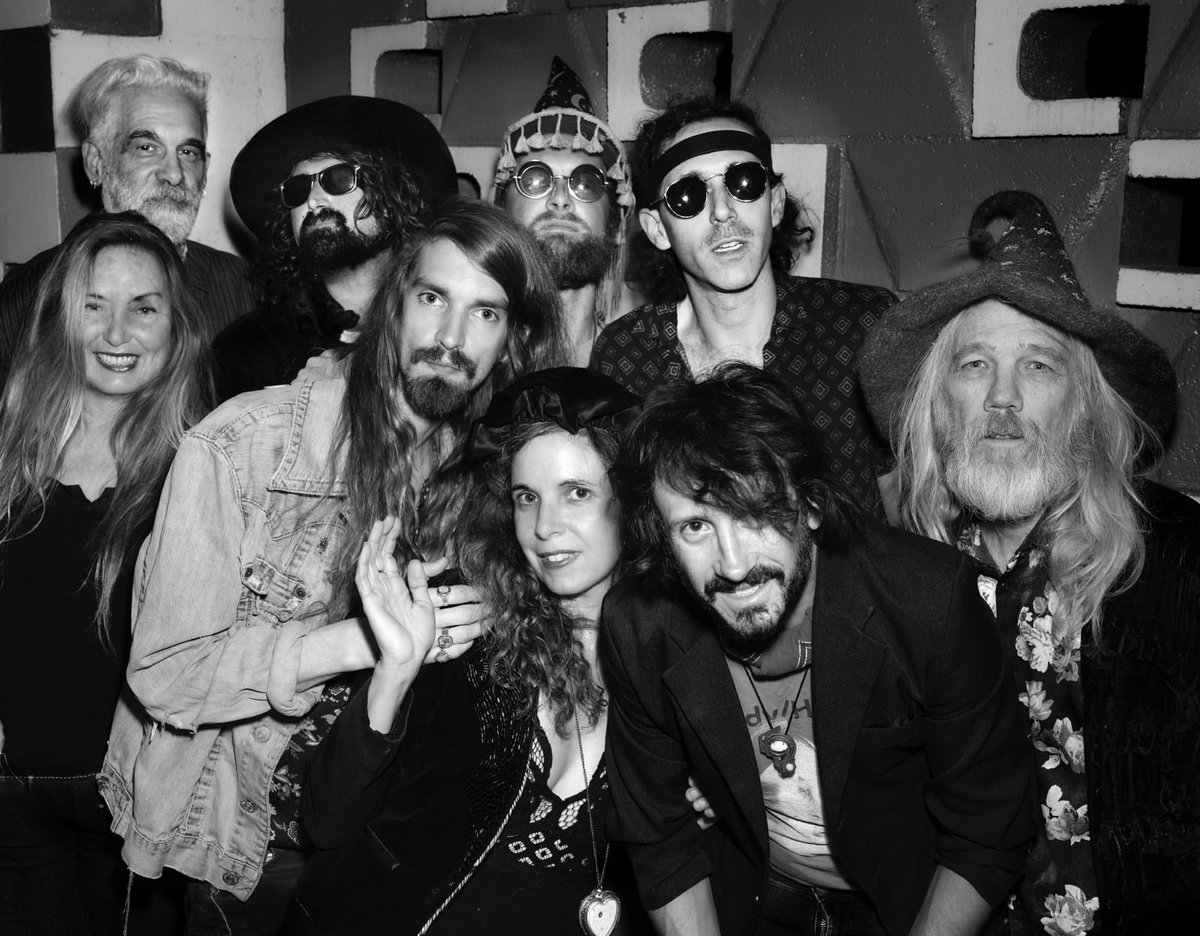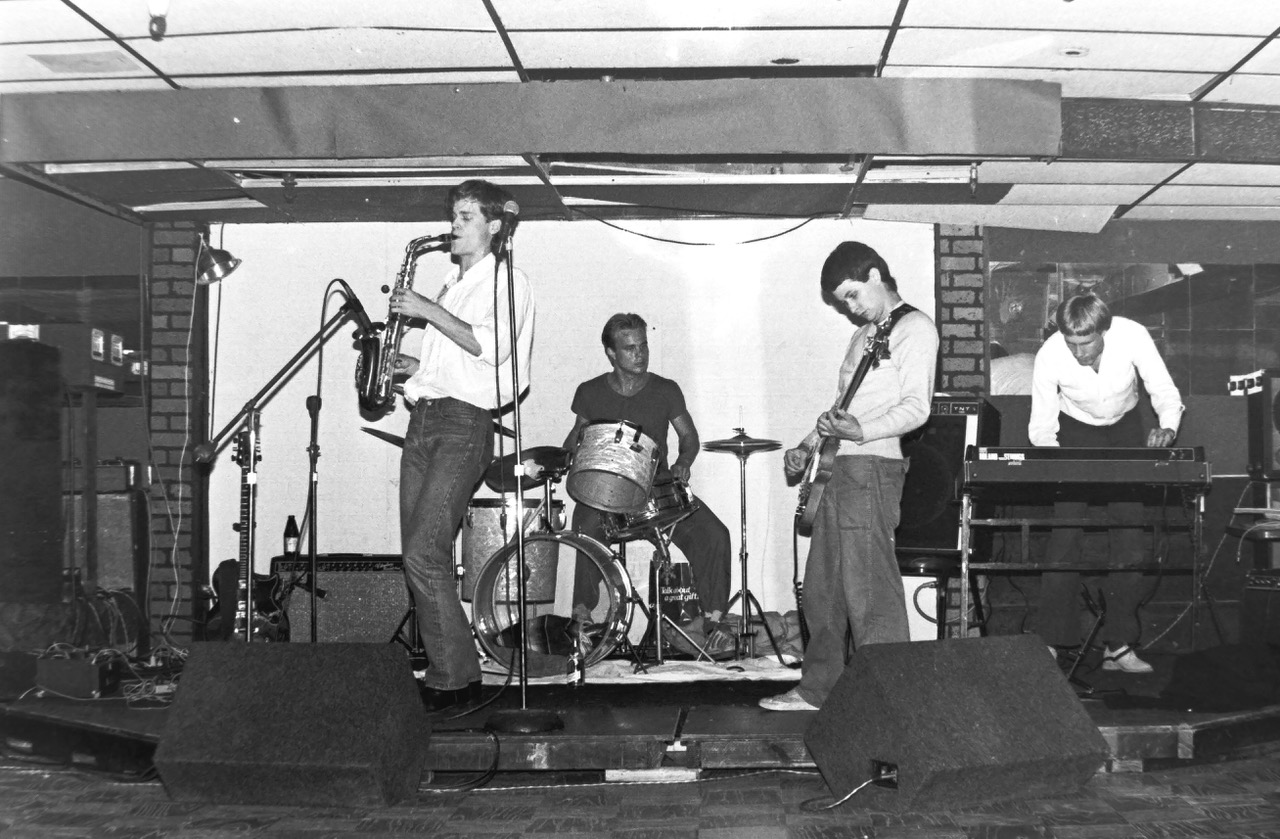The Chemistry Set | Interview | Dave Mclean
The Chemistry Set’s Dave McLean has embarked on a solo journey, presenting his mesmerizing rendition of Kaleidoscope’s ‘Faintly Blowing’.
This fresh interpretation, released through Fruits de Mer Records, captures the essence of the original while adding McLean’s unique flair. Peter Daltrey, who fronted Kaleidoscope, praised the cover for its faithful yet innovative approach, highlighting the song’s climactic ending. The single comes in a distinctive 8″ lathe-cut format, offering fans both stereo and phased mono mixes.
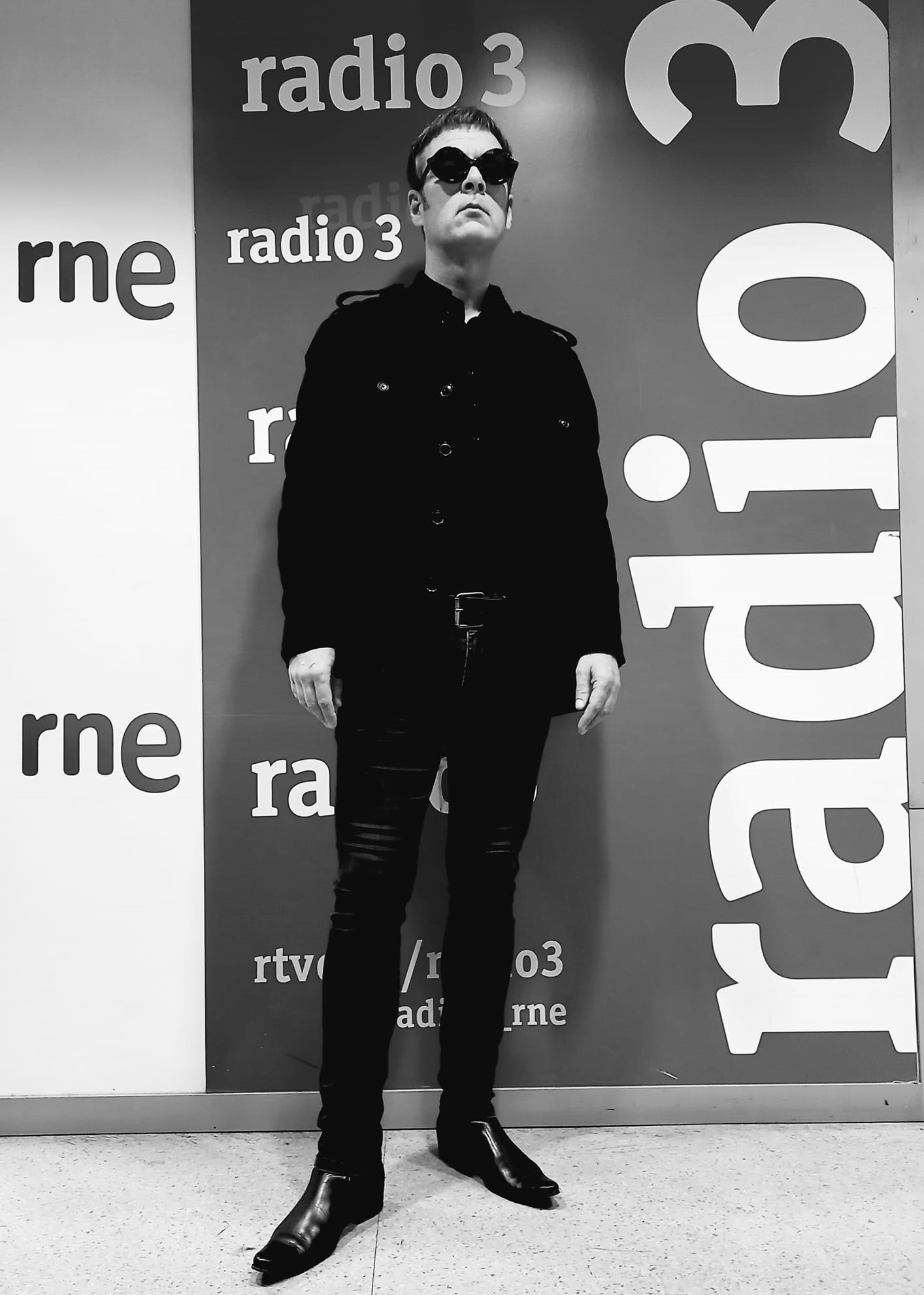
“I wanted to create a big dreamy psychedelic soundstage”
Dave, congratulations on your first solo release! What inspired you to choose Kaleidoscope’s ‘Faintly Blowing’ for your debut solo project?
Dave McLean: Thank you, Klemen, for inviting me back to your psychedelic home and for this opportunity to connect with your readers.
‘Faintly Blowing’ has always been one of my favorite songs by Kaleidoscope, and I first discovered it in the 1980s. When The Chemistry Set formed in 1987, we practiced every Saturday at a studio in London Bridge, where we’d jam on both our own material and various covers that intrigued us. We had a substantial list of cover songs, many of which never made it to recording or live performance.
These included ‘Lady Friend’ and ‘Renaissance Fair’ by The Byrds (which were performed live), ‘Tombstone Blues’ and ‘Baby Blue’ by Bob Dylan (the first was played live, the second recorded on a 4-track), ‘Rain’ by The Beatles (never performed live but recorded on a 4-track), ‘Find the Cost of Freedom’ by CSN&Y (not performed live but recorded on a 4-track), and ‘Faintly Blowing’ (which was neither played live nor recorded). We felt that these songs stood strong in their original forms and were difficult to improve upon, so they remained untouched.
Peter Daltrey’s endorsement of your rendition is quite a compliment. How does it feel to receive such praise from a member of the original band?
Feedback from the original artist is one of the most wonderful things you can receive when you cover a song. You can never be sure how they will react to your interpretation—after all, it’s their creation, their “baby.” With The Chemistry Set, we only cover a song if we believe we can add something fresh to it. Otherwise, it just becomes a karaoke version of the original, which defeats the purpose of making music. This was my approach when I decided to record ‘Faintly Blowing’.
Peter Daltrey is a genuinely lovely person—humble and very encouraging—so it was a truly happy moment when I received his positive feedback. We have been fortunate in the past to get similar praise from other legends, like Ray Thomas of The Moody Blues when we covered his ‘Legend of a Mind,’ and Johnny Echols when we covered Love’s ‘A House Is Not a Motel’.
Perhaps the most unexpected and surreal feedback came from the late, great David Axelrod. We had added a section of his song ‘Sanctus’ (from The Electric Prunes’ ‘Mass in F Minor’) to our cover of Del Shannon’s ‘Silver Birch’ and sent it to him. We were amazed just to receive a response, and his words “Real music, music to make you think,” left us stunned.
‘Faintly Blowing’ is known for its unique sound and psychedelic vibe. How did you approach putting your own stamp on the song while staying true to its original essence?
The original version is, of course, a psychedelic masterpiece, but it was limited by having just two guitars, bass, drums, and vocals.
So, my challenge was to inject something new whilst staying faithful to the original and to make it bigger and even more psychedelic. I wanted to create a big dreamy psychedelic soundstage, utilising the full stereo spectrum.
To do this, I recorded about 12 different guitars (some of them doubled-up, some just appearing for a few seconds) and added a load of psychedelic effects. The same with the vocals, I recorded about six different tracks and another box of psychedelic tricks to get that dreamy ‘lost in space’ sound.
My inspiration was to make the song sound like Kaleidoscope meets Syd Barrett, meets The Misunderstood, meets Brian Jones on Mellotron. I don’t think it really sounds like that, but that’s what was in my head.
I absolutely love Brian Jones’ style of playing the Mellotron, so I wanted to add some Mellotron riffs as a homage to him.
I spent a month or so refining the mixes, building layers, and making it as stereo-wide as possible. The released single is Mix 12.
The decision to release the song as an 8″ lathe-cut single with stereo and phased mono mixes is intriguing. What led to this choice, and how do you think it enhances the listening experience?
The reason for the lathe-cut single is because it takes 6-12 months to release a regular 7″ vinyl single. That is because all the major record labels are releasing on vinyl again and occupying the pressing plants, and I didn’t want to take that long to release it.
But it also fits in well with the DIY, lo-fi approach to recording the single.
And because the song is over 5 minutes long, it has to be an 8″ vinyl, which I think is cool.
Regarding the mono version, most lathe-cut singles are one-sided, but after I finished the stereo mix, I had the idea to do a stand-alone mono mix, not a fold-down of the stereo version but a dedicated mix. Initially, it was just for fun, but when I had finished it, I sent it to Keith from Fruits de Mer Records, and he loved it, so we agreed it would be cool to do a mono B-side.
I am just finishing a third version that will come out as a bonus track on the digital single, which will be released at the end of April on Bandcamp and then on iTunes, etc. This is a special “Keyboard” version, where I have my friend JJ Machuca playing even more Mellotron, Theremin, ARP, and just about every classic keyboard possible. It makes for very interesting listening.
Can you tell us about the creative process behind producing this version of ‘Faintly Blowing’? Were there any challenges or surprises along the way?
I first started working on the song last October. I began recording some guitars in my bedroom. This was the first time I had done that for many years. I then moved to a rehearsal studio to record the rest of the instruments. It was the first time since the 1980s that I had recorded and released a song without going into a recording studio.
This presented many challenges but also opportunities. One of the challenges was that I was extremely limited in the number of microphones I could use. For instance, when you record drums in a recording studio, there are probably about 20-30 microphones. I had two microphones, and one of the stands was broken, so in the end, I used just one microphone to record the drums.
I was not trying to get a primitive drum sound at all, but that was all I had. So the challenge in the mix was to make those drums sound bigger than just one microphone, and I think in the end, they sound quite decent and a little like the 1960s.
The opportunity was for me to do whatever I liked with the sounds, and I really enjoyed building up the layers, effects, and stereo-landscape.
One big problem I had was that I was running so many sound effects and programs that my recording computer (which is fairly new) kept crashing, and I even lost a whole version. That was not fun.
I was pleasantly surprised with the overall sound and feel I got without being in a recording studio.
With this solo release, you’re stepping into the spotlight after your work with The Chemistry Set. How does your solo work differ from your collaborative efforts, and what do you hope listeners will take away from it?
In The Chemistry Set, Paul and I share all the instruments, and we’re used to contributing to each other’s songs. We’re really relaxed and not precious about the other person bringing new ideas to the table. But with the single, I had to do it all myself. This freedom is great, but it requires caution to avoid becoming too self-indulgent without someone to keep the checks and balances.
I don’t think my solo work differs much from my collaborative efforts with The Chemistry Set; it’s like a variant of what we do as a band. Whether it’s The Chemistry Set or me solo, I’m just happy if people enjoy the music and find something meaningful in it.
Are you planning to record some more in the near future?
No, not at the moment. The next project will be a Chemistry Set single, and then we’ll start working on songs for our next album. At some stage in the future, I’d be open to recording another solo single, but my priority is always The Chemistry Set.
Talking about The Chemistry Set… Within your discography, are there any particular songs or albums that hold special significance to the band? If so, could you tell us about the stories or inspirations behind them?
Yes, I would say our EP ‘Alchemy #101’ that was released in 2009.
Paul and I hadn’t seen each other for over a decade after the original band split in the 1990s. We reconnected in 2008, and our initial plan was to release ‘Sounds Like Painting,’ which had been recorded in 1989 but never saw the light of day. Paul had the master tapes, and I took them to a studio to be converted to digital, as they were nearly 20 years old and in poor condition. The engineer told us the tapes needed to be baked in a clay oven to restore them enough for transfer, due to their deteriorated state.
Eventually, we managed to convert them, but when I listened to the digital master tracks, I found that there were some unpleasant 1980s production effects added to the drums. The only solution would be to re-record them, but that posed challenges, as we hadn’t used a “click-track,” making re-recording quite complex. There were also other ’80s sounds that had been added to the guitars, which were not to our liking.
So, Paul and I decided to shift focus. Rather than work on ‘Sounds Like Painting,’ we chose to write brand-new songs, and those new songs appeared on the 2009 EP ‘Alchemy #101’. Since then, we’ve never looked back.
Would love it if you could share some further words about ‘Pink Felt Trip’.
We wrote many of the songs during the coronavirus lockdown. It was a unique time, giving us the opportunity to spend a lot of time together co-writing and refining songs. Typically, we write separately, but then the other person almost always changes the direction of the original song. It was fantastic to work side-by-side.
‘Pink Felt Trip’ (the first song on the album) was heavily influenced by The Red Krayola, Captain Beefheart (from the ‘Safe as Milk’ period), and Frank Zappa (from the ‘Freak Out!’ period).
The influence of The Red Krayola can be heard further in our cover of ‘The Witch,’ where Paul plays a riff from ‘Hurricane Fighter Plane’ and also hits an old whiskey bottle for an experimental sound.
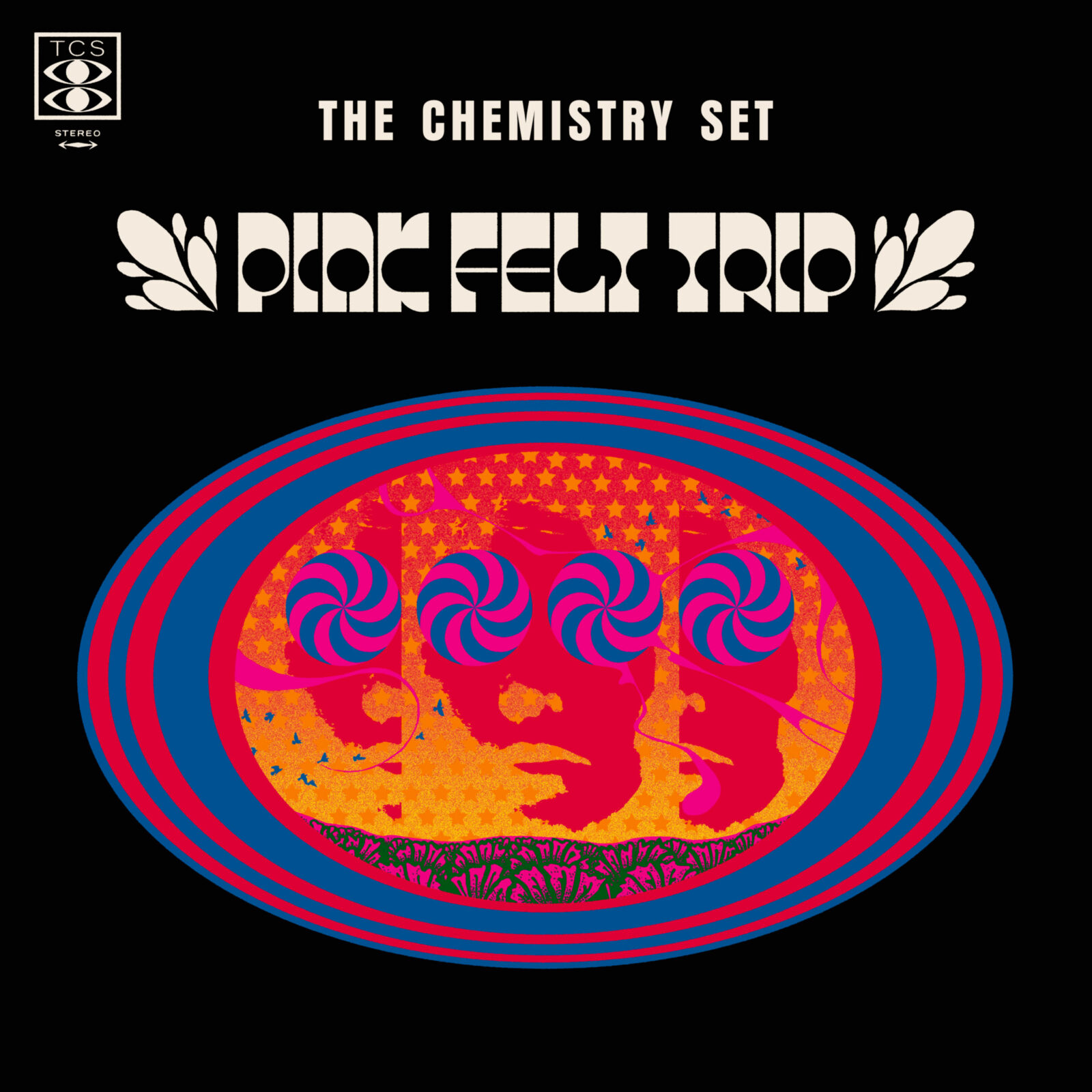
One of our favorite tracks on the album is the trilogy ‘Self Expression Trinity,’ which we wrote together. The first part, ‘Cesar Manrique,’ is a tribute to the great artist and environmental campaigner. We wanted the song to sound like a “lost” Moody Blues track from 1968, with lots of orchestration, timpani, Mellotrons, etc. The second part of the trilogy, ‘Once Upon A Time,’ addresses the increasing censorship we’re seeing, where it’s hard to express a point of view without offending someone. The final part, ‘Liberation,’ was very timely, capturing the feeling of breaking free from the shackles of lockdown and embracing a life with more freedom. I think many people can relate to that sentiment post-Covid.
We’re both big fans of Arthur Lee and Love, so in the introductions to ‘Once Upon A Time’ and ‘Liberation,’ we made a nod to the beginning of ‘You Set The Scene’ from ‘Forever Changes.’ Even though both of our songs have different tempos, we wanted to capture that “hi-hat-kick-bass riff” groove. We’re particularly pleased with the ‘Freak-Out’ ending of ‘Liberation’.
‘Pink Felt Trip’ is our favorite album to date. It’s one album where even now, we wouldn’t go back and change anything.
Klemen Breznikar
The Chemistry Set Facebook / Bandcamp / YouTube
Fruits de Mer Records Official Website / Facebook / Instagram / Twitter
‘Pink Felt Trip’ by The Chemistry Set | Album Premiere

